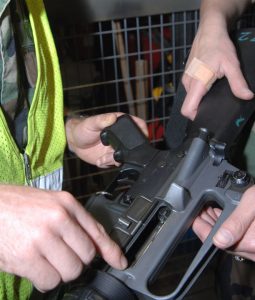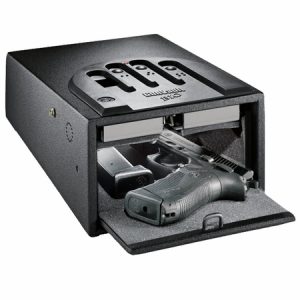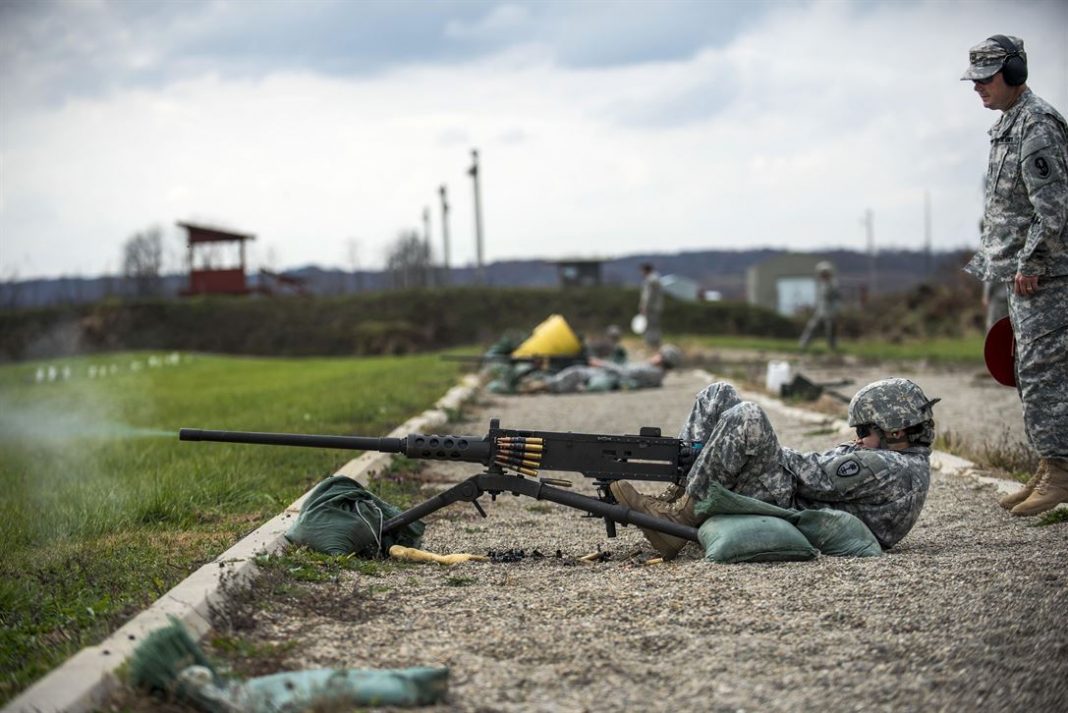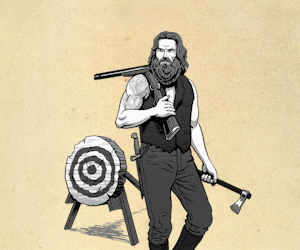The fundamentals of a thing are definitively the most important things to know. Firearms and firearm safety are no different. Whether you are considering purchasing a firearm for defense, collecting, or hunting; there are a number of things to consider. However, in the front of every gun-owners mind should be one thing. Safety, both in how to properly use a firearm and how to store it, should always be the highest priority. Fortunately, there are a few simple fundamentals for reducing risk and ensure that no injuries, or worse, happen due to unsafe use of your firearm.
Firearm Safety 101
Is it loaded?
 Who cares!!! Treat every weapon as if it is loaded, even if you know for certain it’s not. You don’t want to be the one to pull that trigger to dry fire and have a round go off.
Who cares!!! Treat every weapon as if it is loaded, even if you know for certain it’s not. You don’t want to be the one to pull that trigger to dry fire and have a round go off.
When picking up a firearm, your first step should always be to visually inspect. Pull that charging handle back, open the cylinder, pull the slide back. Even though that would discharge a round if present, visually inspect. This should be done from top, back, or side of the firearm and never from the barrel. I repeat, Never visually inspect by looking down the barrel!
Related to that, never store a firearm while it is loaded. A notable exception to this being your self-defense weapon, but we’ll get to that later. Sure, you should store weapons safely away from children and untrained persons. Still, you don’t want your child, or anyone else, to cause any accidental harm because they found your gun and it was loaded. When practiced regularly, firearm safety can almost take a passive nature.
Never visually inspect by looking down the barrel!
Point blank
Never point your weapon at anything you do not intend to shoot…period. That means no fooling around and pointing your gun at your friends when its unloaded. Remember, you should be treating it as if it is anyways. Always make sure you’ve got your weapon pointed in a safe direction when at the range, or at any time really. Don’t get complacent. If you keep the firearm facing a safe direction, it’s one less way something can go wrong.
Along with that, don’t walk around with your finger on the trigger. Until the moment you’re about to fire, your finger should be straight and off the trigger. If your weapon has a safety it should be on until that moment before you move your finger to the trigger. Redundancy really does safe lives. The more steps you take to make sure you don’t have an accidental or negligent discharge, the less likely it will happen.
Who’s there?!
When using a firearm, you don’t just need to know what or who you are shooting. You need to know what lies beyond your target. Your local indoor or outdoor range should have a thick concrete wall or a dirt berm with concrete behind it. This prevents your rounds from going straight through and causing an injury to someone beyond. However, we all enjoying being out at a buddy’s land shooting at targets casually. You have to be aware of your surroundings. Be absolutely certain you know what is beyond that target.
Where do I store it?
 Storage is simple. Always keep your weapons in a locked safe or case. Only you and select trusted individuals should have access to the safe. These should be people who understand firearm safety and treat weapons with respect and proper handling. This includes your self-defense weapon. There are specific safes made for your home defense weapons that are unlocked using biometrics or specific patterned code. This makes them super quick to access in the unfortunate event that it is needed. As touched on before, your guns should always be out of reach of children. Smaller children often are not responsible enough to exercise sound firearm safety principles.
Storage is simple. Always keep your weapons in a locked safe or case. Only you and select trusted individuals should have access to the safe. These should be people who understand firearm safety and treat weapons with respect and proper handling. This includes your self-defense weapon. There are specific safes made for your home defense weapons that are unlocked using biometrics or specific patterned code. This makes them super quick to access in the unfortunate event that it is needed. As touched on before, your guns should always be out of reach of children. Smaller children often are not responsible enough to exercise sound firearm safety principles.
As with all things, the best way to prevent injury is experience. The more you practice firearms safety fundamentals, the less likely you will have any issues. So go out there and have fun. Get your friends to go shooting. Take your children shooting and get them that experience they need. Above all, stay safe!
About the Author: Matthew Foltz is a US Marine Corps Veteran who grew up in a generally gun-free household. But he discovered quickly that he had an interest in military history and by extension firearms. After returning from the military he started collecting and working with various weapons both modern and historical.









